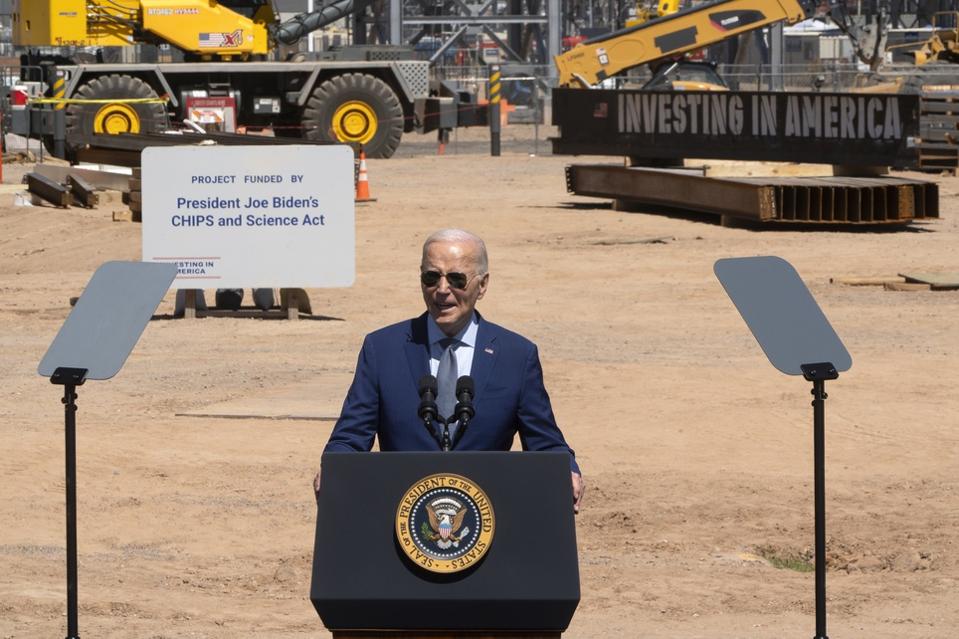Implementation of the Biden administration’s CHIPS Program has ramped significantly in recent weeks after an initial delay. Since late March, the agency has announced preliminary agreements with Intel, TSMC, and Samsung, which include $21.5 billion in grants. In addition, Bloomberg reported that Micron is expected to receive a grant award of $6.1 billion as soon as next week. This total represents a significant portion of the $39 billion available to the CHIPS Program to award. However, this concentration is unsurprising as the Commerce Department’s strategy was to put 75% of the funds, or around $28 billion, toward leading-edge manufacturers.
Given the concentration of subsidies put toward these businesses, competition for the remaining money will be significant. Commerce Secretary Gina Raimondo has repeatedly said that they will not be able to meet all of the requests from applicants. The CHIPS Program has yet to indicate how it may prioritize between these different requests.
This contest for the funds has also been exacerbated by Congress’s recent earmark in the FY24 appropriations legislation that requires the CHIPS Program to fully sponsor Intel’s creation of a Secure Enclave, which would be responsible for creating semiconductors for military and intelligence uses. Originally, the Pentagon was slated to provide $2.5 billion, and the Commerce Department was responsible for $1 billion. However, at the last minute, the Department of Defense decided to pull back its support, as reported by Bloomberg, and Congress directed the entire portion to come from the CHIPS Program.
Initially, there was a belief that this could delay some of the major awards or lower Intel’s award as officials worked to assess what changes it might have to make to its plans with an unexpected $2.5 billion cost now forced upon it. On the contrary, there have been minimal delays, and so far, there have been relatively few consequences. In addition, the money for the Secure Enclave will be awarded separately to Intel on top of what the company has already received, as reported in Forbes.
The most significant effect to date is that this change and the general competition for aid were cited as a reason for the CHIPS Program’s decision not to pursue a notice of funding opportunity for dedicated research and development facilities. This NOFO was expected to be released last fall but was delayed without explanation. Given the overwhelming requests for support, the program may have already considered cutting it, and the need to back Intel’s Secure Enclave pushed it over the edge. The CHIPS Program did not rule out the possibility of the NOFO being opened in the future, but that happening is likely a long shot with such a high demand for money for other projects.
Still, just because the fallout has been minimal so far does not mean that there will be no future impacts of the need to fully fund Intel’s creation of a Secure Enclave. The largest semiconductor manufacturers were always likely to have their awards unaffected, and all three have largely been in line with the reported expectations before their respective announcements. As such, if there will be future consequences, these could likely fall disproportionately on smaller semiconductor manufacturers, with fewer projects potentially being backed or a greater portion of the awards coming as loans rather than grants.
The competition for funding has also spotlighted the Investment Tax Credit, which could be worth 25% of a qualified investment. The Treasury Department has yet to finalize guidance for the tax credit. In the semi-annual Unified Agenda released in December, the latest estimates projected it could be done as soon as June. However, the agency has missed past deadlines, and there is no penalty if issuing the guidance slips past then.
Semiconductor suppliers, in particular, will be watching the final tax guidance. They would not qualify for the credit as it was initially released and, as Politico reported, have been lobbying since to have that changed. While these businesses are eligible to apply for awards from the CHIPS Program, it is uncertain how much they may benefit and could be among the firms that lose out due to the need to fully support Intel’s Secure Enclave.
The fight for subsidies has also led to increased discussion of a CHIPS 2.0, including from Raimondo. The semiconductor industry remains among the most popular with members of both parties. It also holds powerful allies such as Senate Majority Leader Chuck Schumer (D-N.Y.) and Senator John Cornyn (R-Texas), who will run to lead the Senate GOP conference in the next Congress.
On paper, this task appears to be an easy lift. However, any subsequent appropriations will likely not be before 2026, when the CHIPS and Science Act funding lapses. For now, the program has yet to extinguish all of its money, and some lawmakers may be hesitant to rush into another round of aid without seeing what the first wave of support nets them in return. Still, it is worth monitoring industry lobbying efforts and the sector’s allies in Congress in the interim, as these discussions will lay the groundwork for future legislation.

